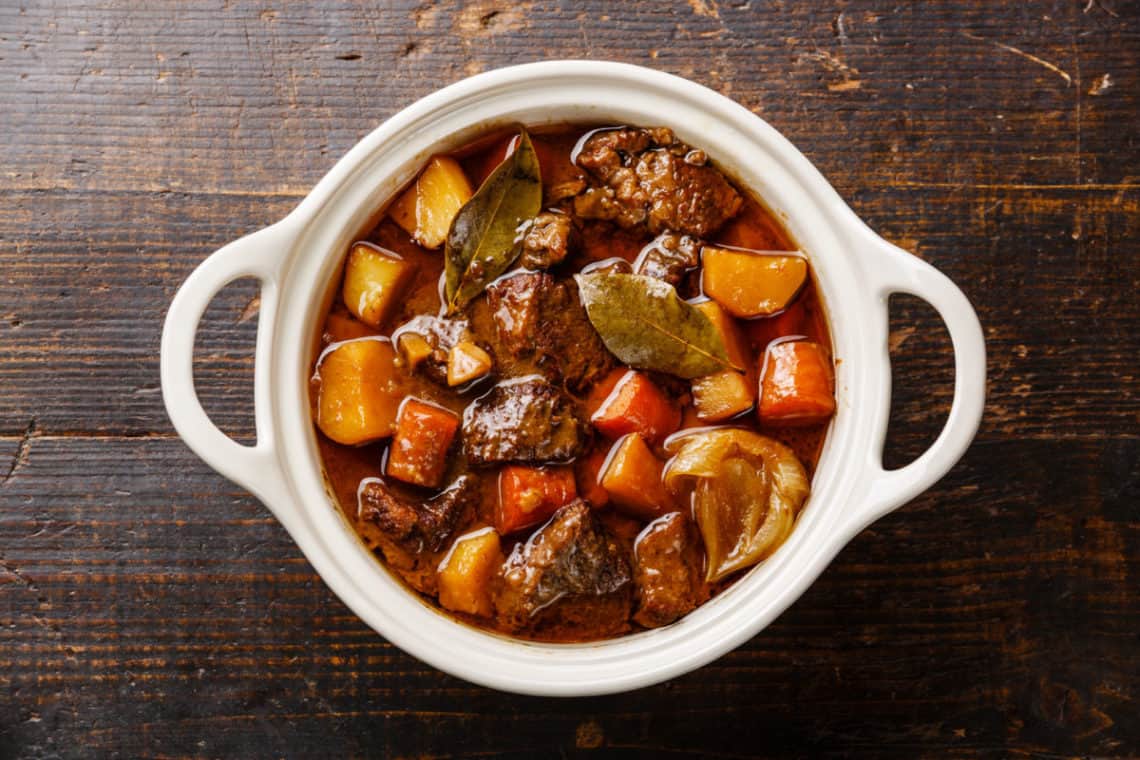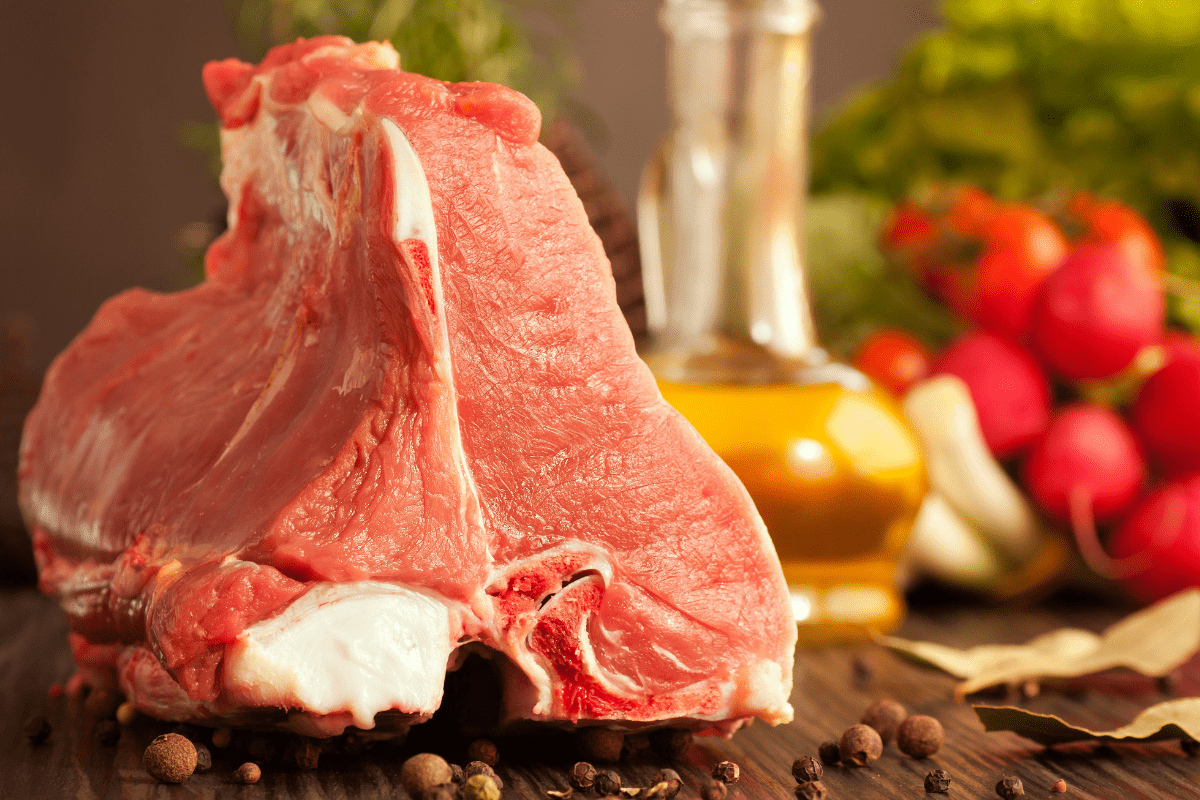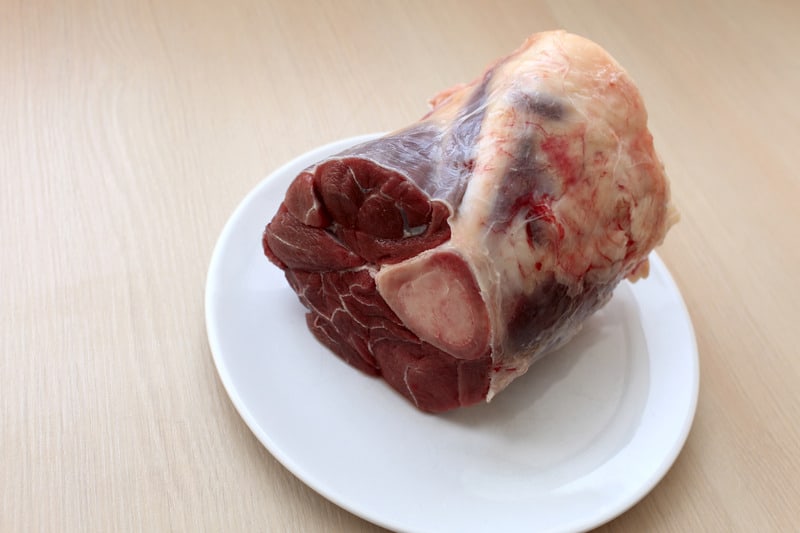When it comes to slow cooking beef, there are many choices you can choose from, but they will not all produce the same result.
So which cuts of beef are best for slow cooking? The best cuts of beef for slow cooking are usually taken from the fore quarter or front of the animal. These beef cuts tend to be tougher and more fatty than the more desired hind quarter cuts, but generally have much more flavor and become tender with long slow cooking.
The 7 best cuts of slow cooking beef are:
- Beef Chuck
- Shin of Beef
- Beef Brisket
- Top Blade Steak
- Mock Tender
- Beef Short Ribs
- Ox Tail
We will now look at why the fore quarter cuts of beef are more suited to slow cooking, and will also give in depth information on the 7 cuts of beef listed.
When cooked right, these cuts of beef work really well with this method of cooking, and will produce tender mouthwatering dishes every time.
Why Using The Fore Quarter Cuts for Slow Cooking Beef is Best
The fore quarter of a cow consists of the hard working muscles of the animal such as the neck, shoulder and chest of the animal.
As you can imagine, these muscles get used a great deal by the animal as it constantly raises and lowers its big head all day to eat.
That constant use makes the muscles strong and tough, and also tend to have more fat marbling and connective tissue than other parts of the animal.
It is this marbling (white lines of fat within the flesh of the meat), that provides such a great flavor to these hard working muscles. Much of it will cook out of the meat during the slow cook process, and mixed with the broken down collagen, you get a rich thick gravy.
Due to the extra work involved with cooking these fore quarter cuts, they tend to be considerably cheaper than the prime cuts. However, learn to cook them right and you will be converted to using them more than any other cuts.
In reality, there is often less work required to cook these cuts if you have a good butcher who will trim the meat for you. Bought this way, you will literally just need to throw the meat into a slow cooker and let it do it’s thing.
When you think of homecooked hearty winter meals such as stews, pot roasts and braised steaks, the fore quarter is where the meat used in those dishes comes from.
Just to be clear, you can slow cook any cut of beef, however the more tender and leaner a cut is, the more likely it is to become dry or mushy if cooked over a longer period of time.
Many people choose to use cuts from the top, bottom and eye round of the hind quarter as it is leaner and tends to hold its shape better throughout cooking. Whilst these cuts can still work well with slow cooking, the abscence of marbelling means you do not get as rich a flavor as comes from fore quarter beef.
Now let’s look at what I consider to be the 7 best cuts of beef for slow cooking.
1. Beef Chuck
The chuck is the shoulder of the animal and lies between the prime rib at one end and the neck of the animal at the other.
The chuck is made up of a collection of muscles that have thick gristles, fat seams and connective tissues running through them.
This part of the animal has been used a lot and so tends to be tougher than other cuts, but breaks down well during slow cooking and produces a rich beefy flavor.
Some preparation is needed prior to cooking to remove the thickest gristles and largest fat seams, however, if you have bought your meat from a reputable butcher, they should have already trimmed the meat of these.
Beef chuck can be prepared by your butcher in several ways depending on the kind of dish you are wanting to serve.
Chuck Steak
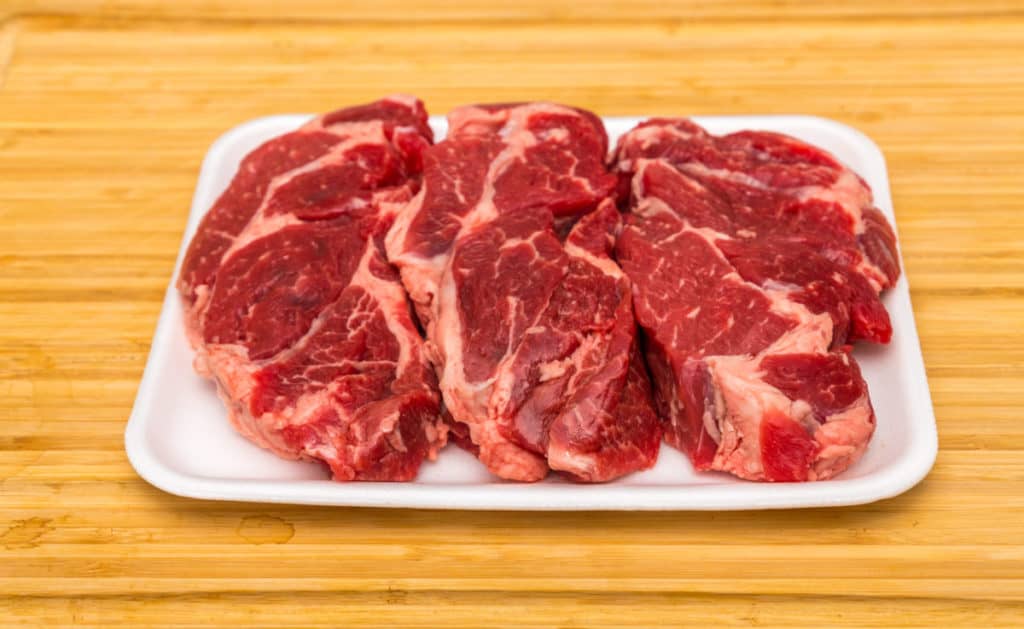
Chuck steak is where the butcher has trimmed a large majority of the gristles and fat from the chuck and has sliced just the eye of the chuck in slices that are about 1 inch thick.
These slices of chuck are cooked best by braising in liquid on a lower heat for a period of time. The liquid used can be anything from stock, wine or gravy, depending on the recipe and flavor you are looking for.
Once cooked, the remaining fat and connective tissues will have cooked down and you will have a tender steak sized piece of meat to serve on the plate.
Diced Chuck

This is when the butcher trims the chuck of most of the larger fat and gristles and then cuts the meat into small chunks, or bite size pieces.
Diced chuck is what would be used for making dishes in a slow cooker such as stews or beef curries etc.
The long slow process of cooking in the slow cooker allows the tough pieces of meat to break down and become tender. If cooked long enough, the chunks will break down further and almost flake into strands of beef.
The marbling within the meat will cook out to make a rich gravy.
Chuck Roast
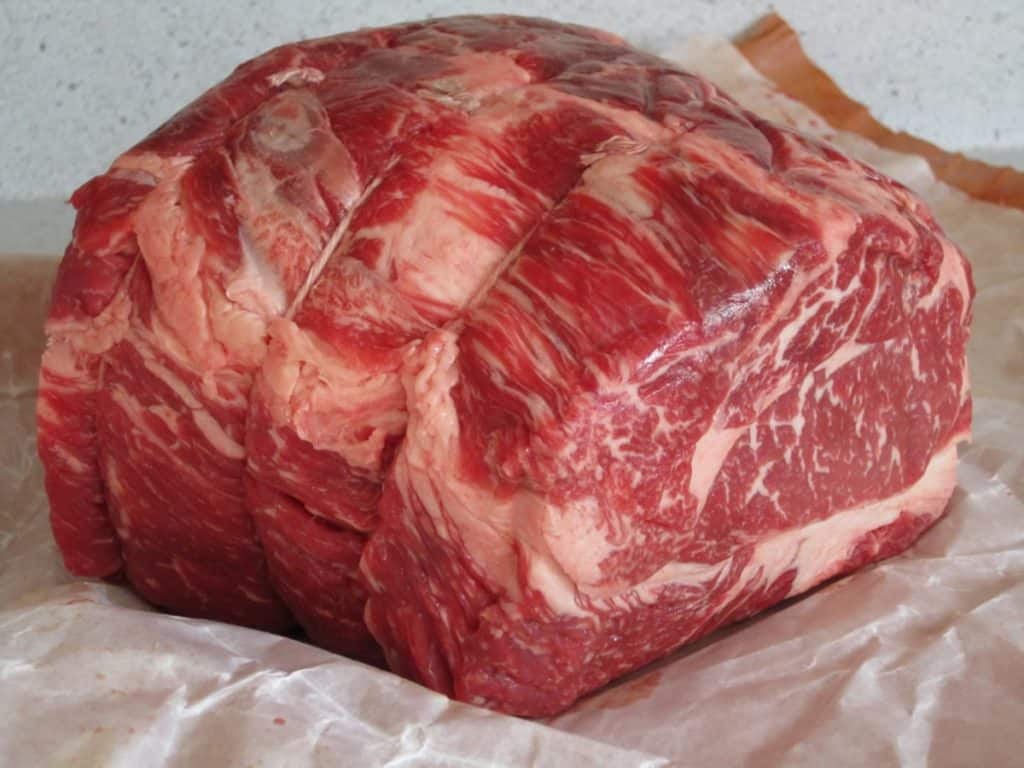
For this cut, the butcher will have trimmed much of the excess fat and gristles from the large muscles. Instead of cutting the chuck into slices or chunks, it will be tied with twine to be cooked as a roasting joint.
The chuck roast can be cooked in the slow cooker or on a low setting in the oven. Moisture needs to be included in the roasting pan and covered with foil to keep the meat moist during cooking.
When the roast has had chance to cook down and become tender, you can remove the foil to allow the roast to brown.
After resting, the joint can be carved as you would a normal roast but you may find if falls to pieces if it is tender enough.
2. Shin / Shank of Beef
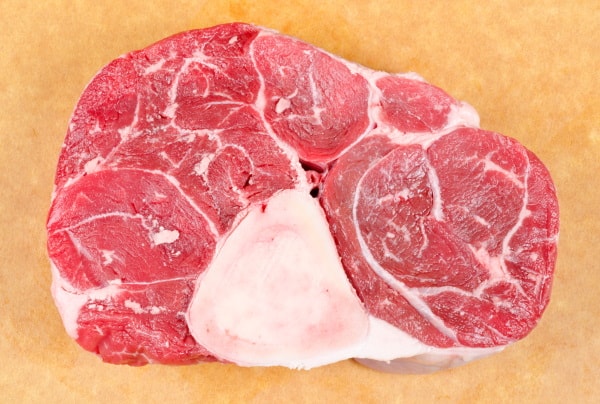
The shin or shank of beef is basically the leg of the animal as the name suggests.
This cut is probably one of the hardest worked muscle groups due to holding the weight of the animal and the walking, and therefore is a really tough cut.
However, with the right amount of cooking, it is probably one of the tastiest cuts you can get off the animal.
Much like the beef chuck, the shin of beef can be prepared in slices, diced or even sliced with bone connected.
The sliced and diced shin of beef would be cooked in much the same way as the beef chuck, however the cooking time will be longer as the muscles needs more time to break down and become tender.
The shin of beef has a great deal of connective tissues that break down during cooking to produce a wonderful, almost gelatinous stock for making a rich gravy.
When cut on the bone, the shin of beef is sometimes used as a cheaper version for making Osso Buco.
Traditionally, Osso Buco is made using veal shanks but obviously comes at a much higher cost.
For more information regarding beef shanks, check out our in depth article here: Beef Shank – The Overlooked Cheap & Tasty Cut of Meat
3. Beef Brisket
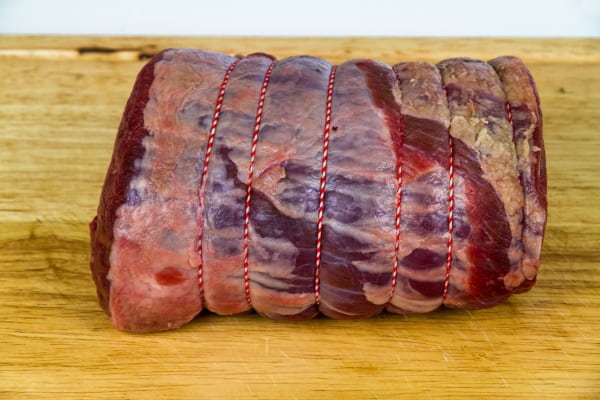
This cut of beef comes from the chest of the animal and is very well marbled with fat as well as having a generous layer of fat on the outside.
The brisket requires quite a bit of trimming to rid it of the fat running through it and also an elastic type membrane that runs though it.
The fiborous muscle of the brisket breaks down during slow cooking and can be sliced or shredded once cooked.
The brisket is a very flavorful meat and is often used for making corned beef and pulled beef recipes.
The butcher will sometimes roll the brisket as a joint which can be used as a pot roast, or will sell it as a flat piece that can be slow roasted in the oven, or commonly smoked and slow cooked on a BBQ or smoker.
4. Blade Steak
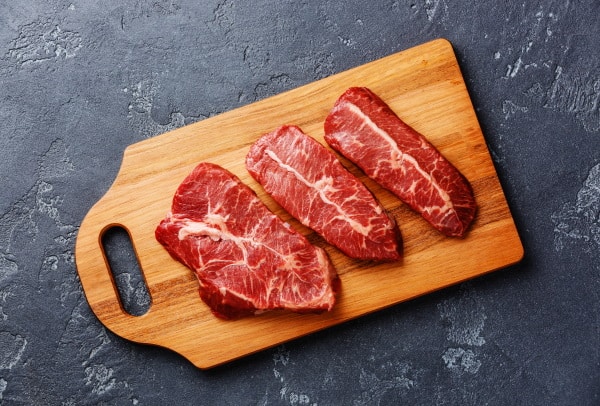
This cut of meat is a muscle that lies on top the shoulder blade bone of the cow.
It is usually cut across the muscle into 1″ thick slices and slow cooked or braised.
There is a thick band of connective tissue that runs through the centre of the muscle and so each slice will have this band within it. However, this breaks down during the cooking process and produces a rich beefy flavor.
You may find it hard to buy this cut as it has since found popularity as a flat iron steak. This is where the muscle has been slices lengthways through the middle and the thick band of connective tissue removed. The remaining two flat cuts of meat are very tender and flavorful and can be cooked quickly like a steak.
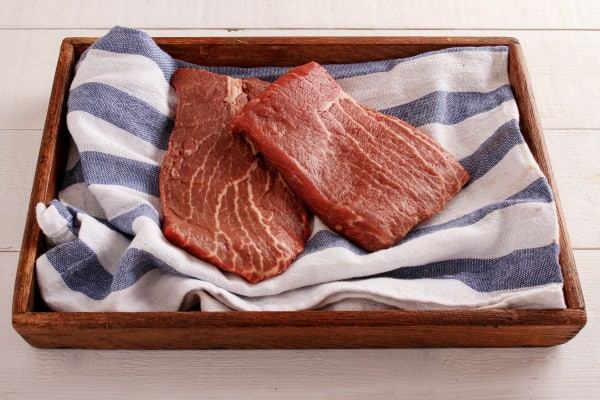
5. Mock / Chuck Tender
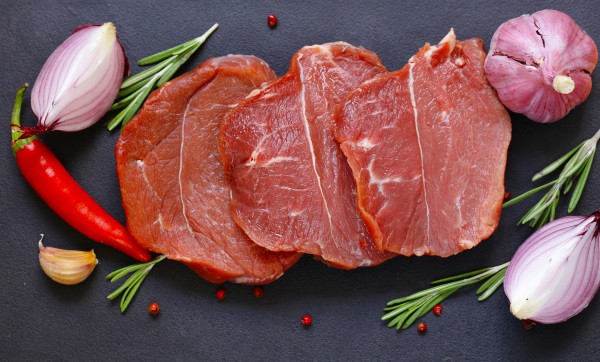
The chuck tender or mock tender is another muscle that runs across the top of the blade bone.
The cut gets it’s name due to it’s resemblence to the beef tenderloin and not because it is tender.
It is a solid lean muscle that once again has a thick band of collagen type tissue running through it and so need slow cooking for that to break down.
This cut is ideal for pot roasting in a piece or slicing into medallions to be braised in liquid.
Other names for this cut are:
Eye of the blade – Jews Fillet – Chuck Filet – Scotch Tender – Chuck Eye
6. Chuck Short Ribs
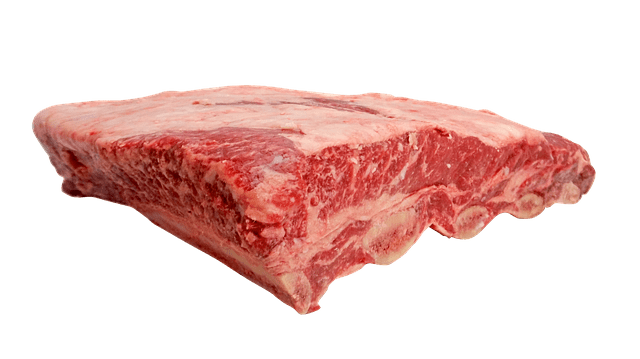
When it comes to slow cooked beef, you will have to go a long way to beat the rich beefy goodness that is braised short ribs.
This cut of meat is taken from the plate (belly) of the animal which connects to the brisket.
The ribs are cut into short pieces and have the meat attached to them.
The short ribs are usually a tough, very well marbelled cut of meat, and need to be cooked long and slow until the meat is falling off the bone.
However, seasoned up and cooked right it is hard to get a better tasting cheap cut of meat.
7. Ox Tail
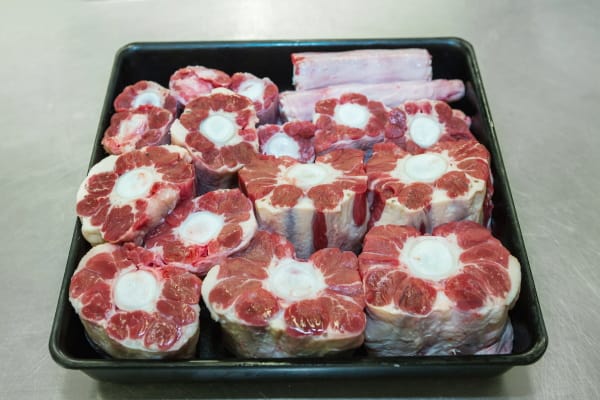
You have probably guessed from the name that this cut of meat doesn’t come from the front end of the cow.
The Ox Tail is exactly that, the tail of the cow.
This cut of meat is surrounded by a thick layer of fat that needs to be heavily trimmed prior to cooking. Again, your butcher will already have done this if you buy it pre-cut and trimmed.
The Ox Tail is usually cut through the joints of the tail and each section gets smaller as it goes down the tail to the tip.
Ox Tail stew or soup is a wonderfully rich dish but takes a bit of prep work.
To fully enjoy the meat from the ox tail, it is usually best to slow cook or simmer the tail sections until the meat is ready to fall off of the bone.
You let the liquid cool and remove the large amount of fat that will settle on the surface of your cooking liquid (stock).
Once cooled and the surface fat removed, you can start picking all the meat off the bones of the tail. Put the meat back in the stock and discard the bones.
Now you are ready to start the cooking process over again by adding any vegetables you want in your ox tail stew.
This can be a labor intensive dish, but the flavor is outstanding and well worth the effort.
Slow Cooked Beef
Hopefully this list has given you a little more knowledge on the types of beef cuts that work well for slow cooking.
Provided you allow the time needed for these meats to break down during the cooking process and become tender, you can enjoy meals that will rival any steak dinners, and at a fraction of the price.
Investing in a slow cooker will allow you to set and forget for most of the day, and reward you at the end of the day with a delicious hearty meal that is fit for a king.
